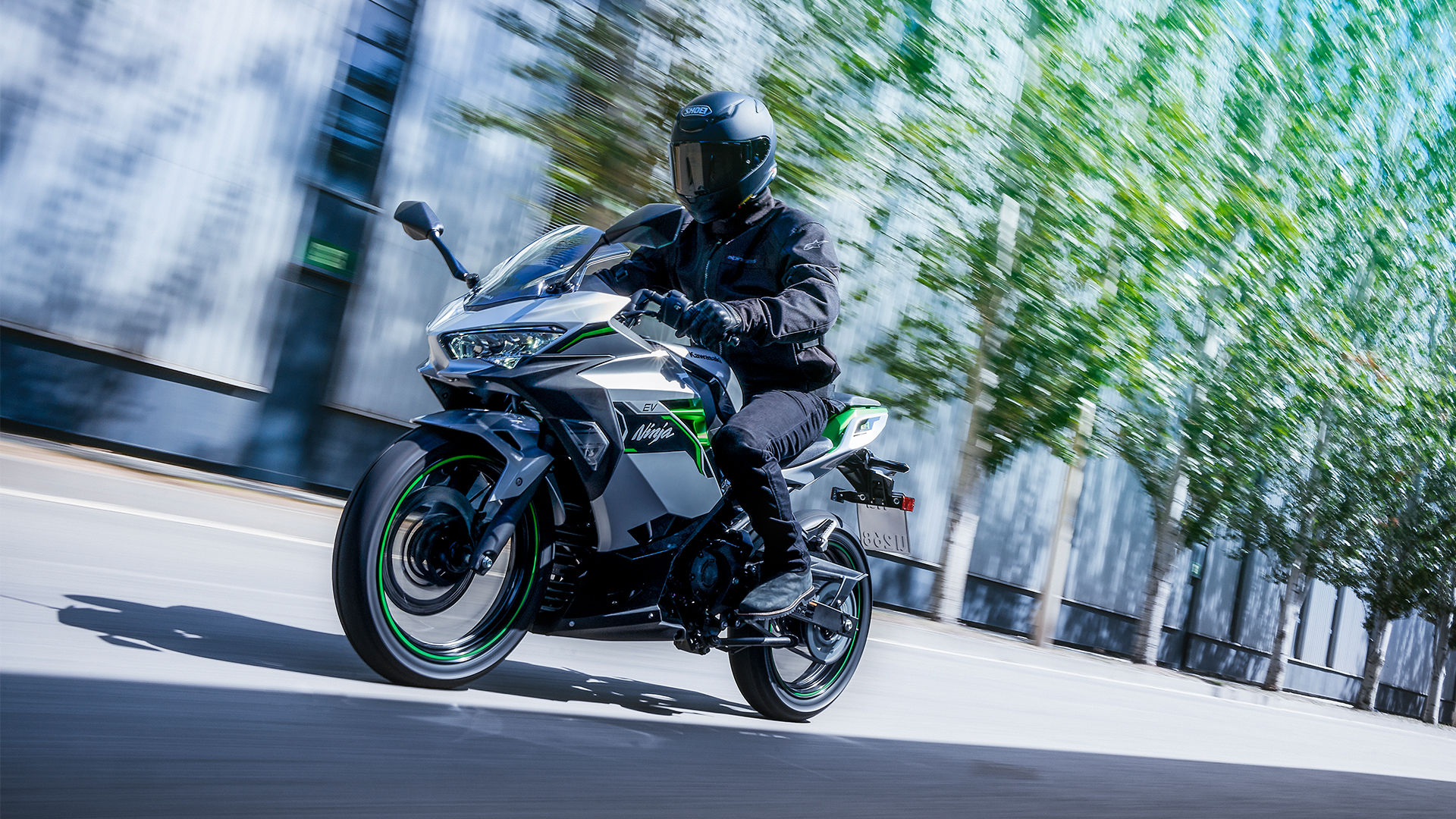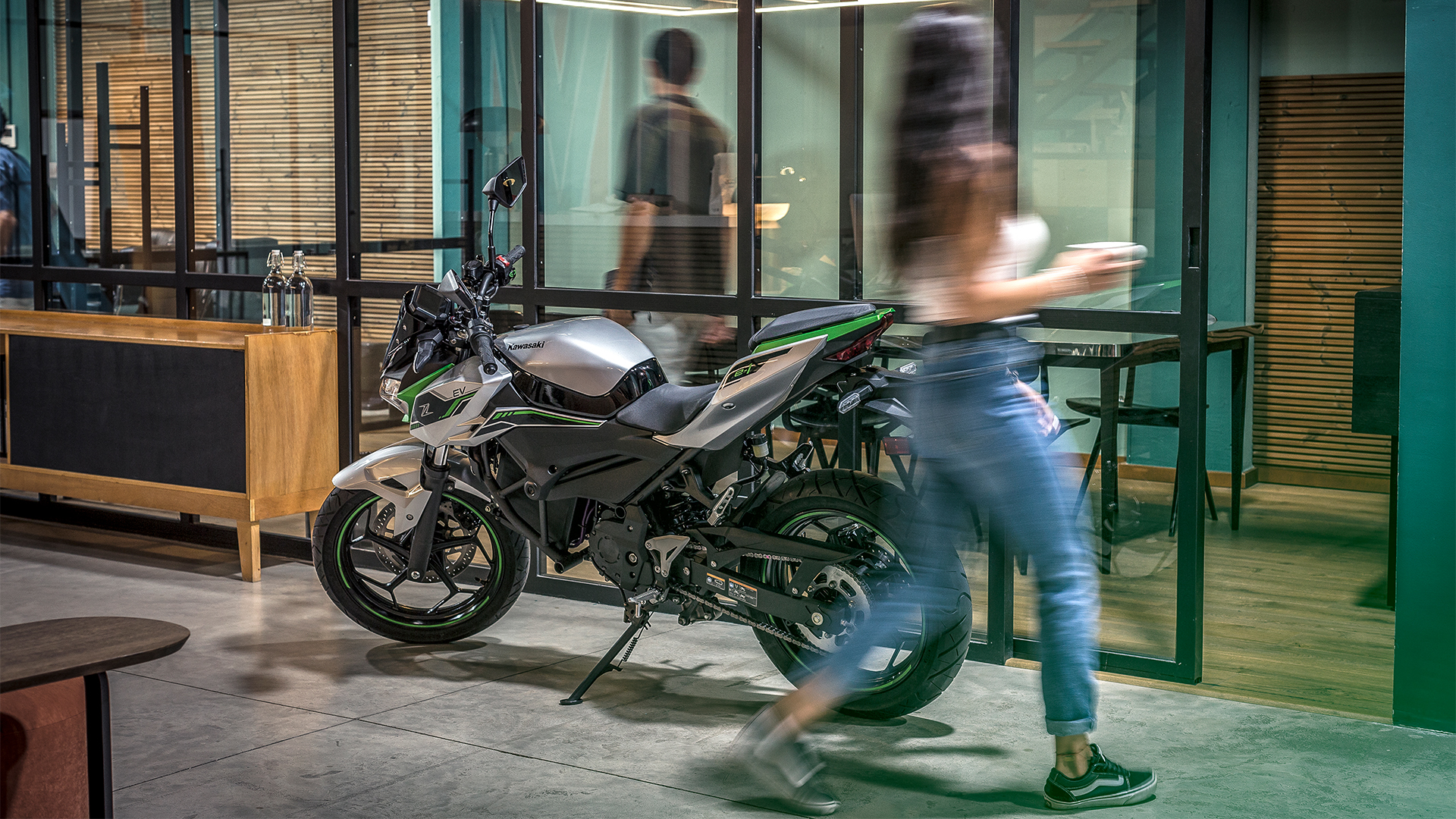Kawasaki launches its first electric Ninja in the US – and it's the cheapest one so far
The Ninja e-1 And Z e-1 bikes go on sale in the US next year

Ask any motorcycle aficionado about the Kawasaki Ninja and their response – usually preceded by a sharp intake of breath – will typically revolve around insane performance figures, World Superbike Championship wins and blisteringly fast laps of the notorious Isle of Man TT circuit.
First launched in the 1980s, the Ninja insignia has come to represent the absolute cutting-edge of sports bike performance, with modern iterations (chiefly the H2R, for Top Gun fans) producing an eye-bleeding 310hp and 14,000rpm from a supercharged engine. Only the brave need apply.
It comes as a surprise, then, that Kawasaki is launching its first range of electric motorcycles under the Ninja namesake. But before you get all hot under the collar, we should probably point out the two models are 125cc-equivalent bikes capable of a top speed of… wait for it… 51mph.
So what gives? Well, Kawasaki has endowed these two learner-friendly city-slickers with 5kW permanent magnet synchronous electric motors. This can be boosted to 9kW thanks to a special e-boost function that’s activated by a button on the handlebars.

The Ninja Z e-1 goes for the full fairing race styling, while the Ninja e-1 is a more stripped-back affair, but both bikes are designed to appeal to entry-level riders looking for a clean, quiet and efficient way to cruise around town.
In the UK, for example, you can ride one of the electric Ninjas on a CBT, which stands for Compulsory Basic Training and is little more than a day out on the roads with an instructor to make sure you are not completely inept.
Charging the upcoming electric Ninja can be done in a variety of ways, by either removing the two 30Ah battery packs and plugging them into a docking station at home or work, or by plugging the motorcycle directly into a standard domestic outlet.
Get daily insight, inspiration and deals in your inbox
Sign up for breaking news, reviews, opinion, top tech deals, and more.
A full charge of each battery pack takes approximately 3.7 hours and Kawasaki cites a range of around 41 miles on a single charge, depending on the riding mode, weight of rider and lots of other factors.
Despite the bikes being aimed at the novice rider, they sport features pinched from much larger machines, such as powerful disc brakes, ABS braking control and 17-inch alloy wheels. There’s even a "walking mode" that assists the user when maneuvering the bike at low speeds.

Is this the cheapest Ninja to date?
This is certainly going to be the most affordable way of throwing a leg over a brand new Kawasaki Ninja, so long as you don’t mind the tepid performance figure and under-muscled styling.
Kawasaki says it is taking orders through its dealer network now, with prices starting at $7,599 for the Ninja e-1, while the naked Z e-1 starts at $7,299.
First deliveries are expected before the end of the year and through to summer 2024, depending on your place in the queue.
You might also like

Leon has been navigating a world where automotive and tech collide for almost 20 years, reporting on everything from in-car entertainment to robotised manufacturing plants. Currently, EVs are the focus of his attentions, but give it a few years and it will be electric vertical take-off and landing craft. Outside of work hours, he can be found tinkering with distinctly analogue motorcycles, because electric motors are no replacement for an old Honda inline four.